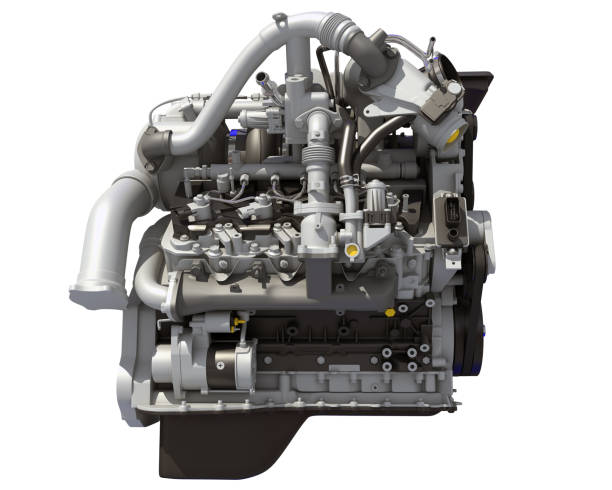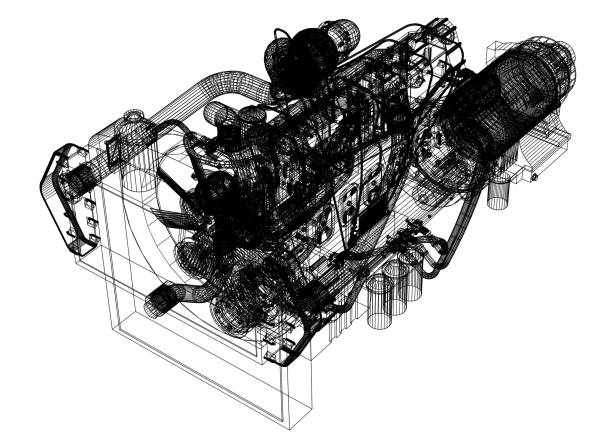How Much Does a 5.9 Cummins Weigh? A Complete Guide To Engine Weight
In the world of pickup trucks and heavy-duty vehicles, Cummins diesel engines can almost be regarded as a kind of symbol. With stable performance, durable structure and powerful performance, it has won wide trust among users. Especially the 5.9 Cummins, this engine is regarded as a classic in the hearts of many car enthusiasts.
When people talk about 5.9 Cummins, they often touch upon power output, modification potential or reliability, but in fact, the most fundamental and easily overlooked issue is its weight. The weight of an engine is not merely a figure; it directly affects the difficulty of installation, the vehicle’s handling performance, and in some cases, even fuel economy. So, what exactly is the weight of 5.9 Cummins? Are there any differences between different versions and generations? Now let’s systematically sort it out.
How Much Does a 5.9 Cummins Weigh?
Overall, the weight of 5.9 Cummins is not a fixed value but exists within a certain range. The weight of this engine varies depending on the design of different versions and eras.
- 12V (6BT) version: This was an earlier and more classic design, weighing approximately between 890 and 1,100 pounds. Due to its relatively simple structure and fewer accessories, the overall weight is relatively low.
- 24V (ISB) version: With the upgrade of design and emission standards, the weight of the 24V model has increased to 1,100-1,150 pounds. A more complex fuel system and additional devices make it slightly heavier than the earlier 12V.
In addition, it is necessary to pay attention to the difference between dry weight and wet weight. Dry weight refers to the weight without including coolant, engine oil and other liquids, while wet weight includes all the liquids required for operation. Under normal circumstances, wet weight is several dozen pounds heavier than dry weight. Therefore, when discussing the weight of an engine, it is necessary to clarify which one it is.

Weight Comparison: 5.9 Cummins Vs 6.7 Cummins
If 5.9 Cummins is compared with the later 6.7 Cummins, it can be found that the weight difference between them is not particularly large.
- 5.9 Cummins: approximately 1,100 to 1,150 pounds.
- 6.7 Cummins: Typically between 1,050 and 1,070 pounds (wet weight).
In terms of numbers, some people might even think that 6.7 is actually lighter. However, it should be understood that the values here are affected by the measurement method and configuration. For instance, the weight of 5.9 is mostly based on dry weight, while the data of 6.7 is often wet weight. In other words, directly comparing numerical values does not explain the whole problem.
Overall, the design of 6.7 is more complex, with an added emission control system and a larger displacement. Therefore, in practical applications, it often appears more cumbersome than 5.9. For vehicles, such weight differences can affect the installation process, the front and rear weight distribution of the entire vehicle, the handling feel, and to a certain extent, fuel efficiency.

The Weight Difference Of 2nd Gen Swap 5.9 Cummins
During the development of 5.9 Cummins, the second generation (usually referring to the 24V ISB from 1998 to 2002) was an important stage. This generation of engines, while maintaining the overall structural reliability, has added more technological upgrades.
Compared with the first generation’s 12V, the second generation has improved in both the fuel injection system and emission requirements, which has also brought about a change in weight. Overall, the second generation generally weighs over 1,100 pounds and is closer to a later version than the first generation.
Although this difference may not seem significant, in some weight-sensitive scenarios, such as when modifying or replacing an engine, this difference of several dozen pounds may still need to be taken into account. Overall, the second generation is heavier, but in terms of durability and power performance, it still maintains the consistent advantages of 5.9.

What Affects The Weight Of a 5.9 Cummins?
In addition to generational differences, there are many external factors that can affect the final weight of an engine. Common ones include:
- Whether the accessories are complete: Whether the turbocharger, generator, air conditioning pump and other accessories have been installed will directly change the weight.
- Transmission system configuration: Whether it is equipped with a flywheel, clutch or even transmission connection parts will add an extra tens to hundreds of pounds.
- Version and year differences: The design varies slightly in different production years. For instance, some batches use thicker components or additional discharge devices, which will increase the weight.
- Measurement methods: The difference between dry weight and wet weight in measurement methods can also lead to data variations.
Therefore, when we talk about the weight of an engine, it is not surprising to see different data. The important thing is to figure out on which configuration and conditions these values are derived.

Final Words
Overall, the weight of 5.9 Cummins is approximately between 1,100 and 1,150 pounds. The early 12V version was lighter, while the second generation and subsequent 24V versions were closer to the upper limit. In comparison with 6.7 Cummins, the weight difference between the two is not significant, but due to different structures and designs, there are still some differences in actual experience.
The weight of an engine is not merely a cold number; it affects installation, maintenance and the overall performance of the vehicle. Whether it is studying vehicle model configurations or planning for replacement or upgrade, understanding these weight differences is always an important step in making reasonable choices.
